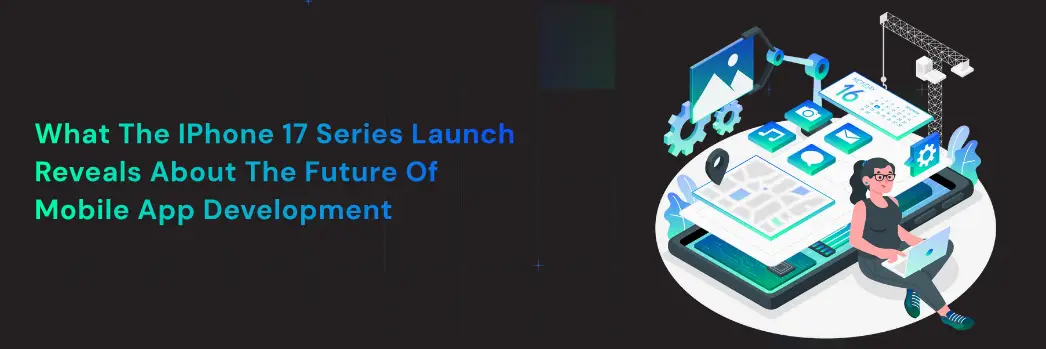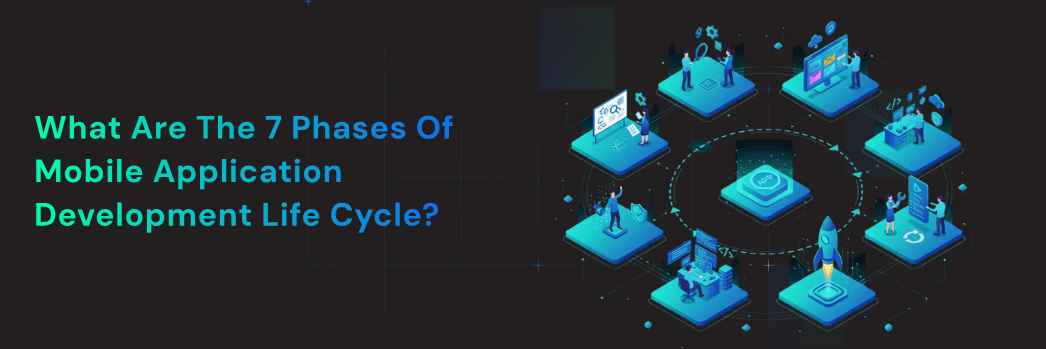What the iPhone 17 Series Launch Reveals About the Future of Mobile App Development
- Miss. Lily
- 2 min read

Apple’s launch of the iPhone 17 series has once again set the bar for innovation in the tech world. Beyond just new smartphones, this launch provides crucial insights into the future of mobile app development. With cutting-edge hardware, AI-enhanced features, and improved sensors, developers now have a golden opportunity to build smarter, faster, and more immersive applications. In this blog, we explore what the iPhone 17 reveals about the direction of iOS app development services and how businesses can leverage these advancements.
The iPhone 17 comes equipped with Apple’s latest A-series chip, featuring enhanced CPU, GPU, and neural engine performance. For mobile app developers, this means:
- AI-powered apps: On-device AI capabilities allow apps to perform real-time analytics, predictive suggestions, and complex image processing without relying on the cloud.
- Graphics-heavy apps: Gaming apps, AR experiences, and 3D modeling apps can run smoother than ever.
- Improved multitasking: Faster load times and seamless app switching enhance user experience, a critical aspect for mobile app development companies.
With this performance boost, developers can now create apps that were previously only feasible on high-end desktops, pushing the boundaries of what mobile apps can achieve.
The iPhone 17’s enhanced camera system includes multi-lens setups, improved low-light photography, and AI-assisted computational imaging. These features directly influence app development:
- Augmented Reality (AR): AR apps, like virtual shopping or educational tools, can now offer more accurate object detection and depth sensing.
- Social media & content creation: Photo and video apps can integrate cinematic filters, AI effects, and real-time editing tools.
- Healthcare & educational apps: Better imaging capabilities support remote diagnostics, virtual learning, and interactive simulations.
Developers can now design visually immersive and interactive apps, meeting the growing demand for high-quality mobile experiences.
The iPhone 17 series includes advanced sensors like LiDAR, motion tracking, and environmental detectors. This allows context-aware app development:
- Smart and adaptive apps: Fitness apps can monitor motion, provide real-time guidance, or adjust workout routines.
- IoT integration: Smart home and lifestyle apps can seamlessly interact with devices and environmental conditions.
- Safety & accessibility: Sensors enable apps that alert users to hazards or assist visually impaired users.
The integration of these sensors encourages developers to build apps that respond intelligently to the user’s environment.
Apple emphasizes on-device AI and machine learning, which transforms how apps process data and interact with users:
- Privacy-first AI: Sensitive data stays on the device, allowing apps to provide AI features while protecting user privacy.
- Real-time personalization: Apps can adapt recommendations, notifications, and experiences instantly.
- Automation and prediction: AI can enhance apps for e-commerce, productivity, healthcare, and entertainment.
For iOS app development services, this is a major opportunity to deliver smarter, faster, and more personalized apps that engage users effectively.
Alongside hardware, the iPhone 17 introduces iOS 21, bringing new APIs, widgets, and multitasking features:
- Cross-device functionality: Apps can work seamlessly across iPhone, iPad, and Mac, creating ecosystem-first experiences.
- Interactive widgets: Apps can display real-time information directly on the home screen, increasing engagement.
- Expanded ARKit and MLKit tools: Developers can build immersive AR applications and smarter utilities.
These features encourage developers to rethink app strategy, focusing on ecosystem integration and real-time user interaction.
The iPhone 17 series highlights the trends that will shape the future of mobile app development:
- AR and VR will become mainstream. With improved cameras and sensors, immersive apps will grow rapidly.
- AI will enhance personalization. On-device machine learning enables adaptive, privacy-conscious apps.
- Performance expectations are higher. Users demand fast, smooth, and responsive apps.
- Ecosystem thinking is essential. Apps must provide seamless experiences across multiple devices.
- Privacy-first apps win trust. Apple’s emphasis on local processing reinforces secure, privacy-focused app development.
By aligning app strategies with these trends, businesses can build apps that stand out and deliver tangible value.

The iPhone 17 launch is more than a smartphone release—it’s a blueprint for the future of mobile app development. From enhanced performance and AI-driven personalization to advanced AR capabilities and ecosystem integration, developers now have the tools to create next-generation apps that are faster, smarter, and more immersive.
For businesses looking to stay ahead, partnering with a professional iOS app development service can unlock the full potential of the iPhone 17’s features. Whether it’s AI-powered solutions, AR-based experiences, or privacy-focused apps—the future of mobile app development is here, and it’s exciting.
Search
Recent Post
- WordPress Site Maintenance Costs in 2025: A Complete Breakdown
- Strategies for Managing a Software Development Project
- What Are the 7 Phases of Mobile Application Development Life Cycle?
- Advantages of Swift Language: Why Should You Build an iOS App with Swift?
- Node.js vs. React.js: Which JavaScript Technology Should Developers Choose?
- UI/UX Design Services – Expert Solutions for Web & Mobile Apps
Categories
- Blog (43)
- Mobile App (7)
- option1 (1)
- option2 (1)
- WordPress (2)



